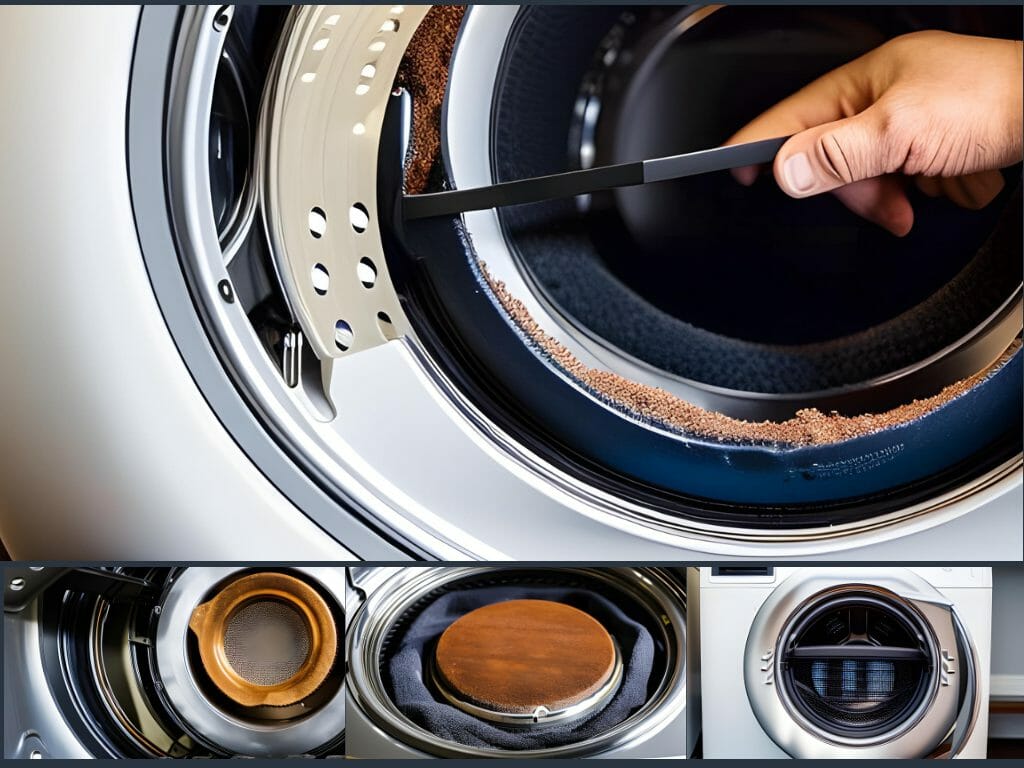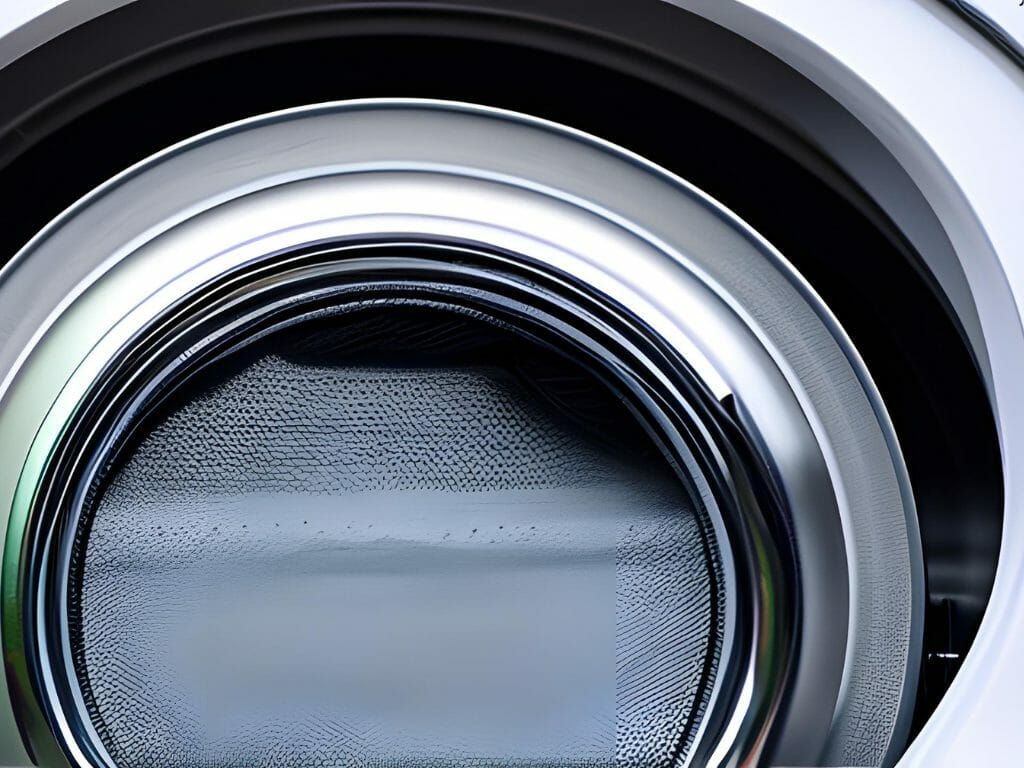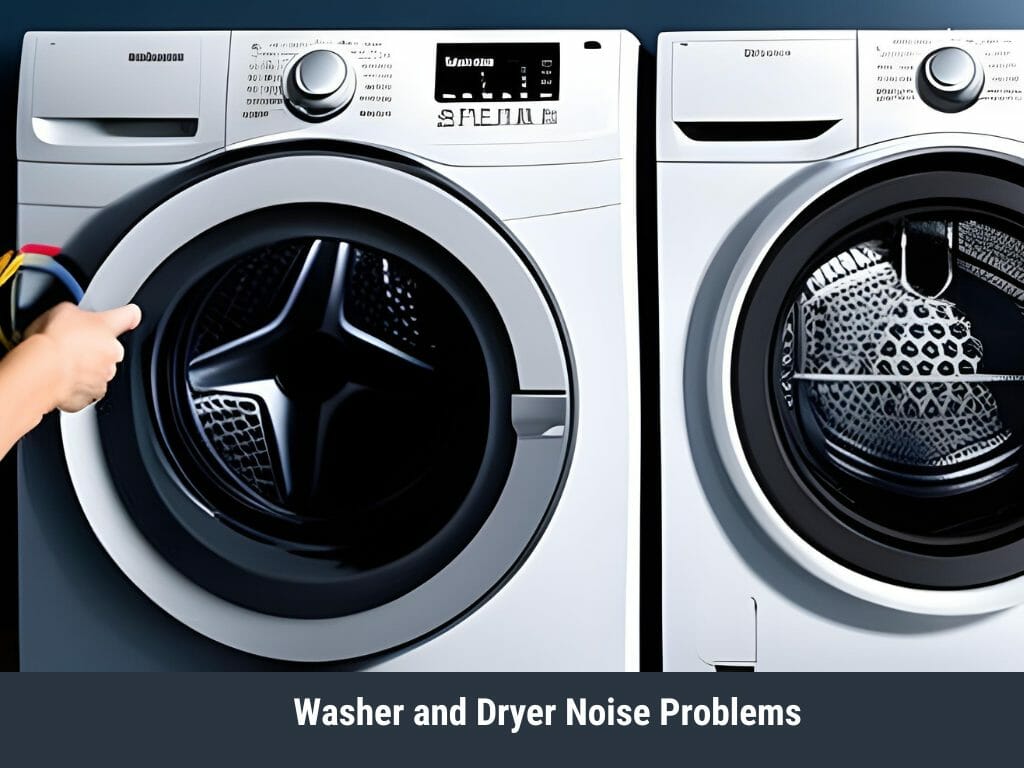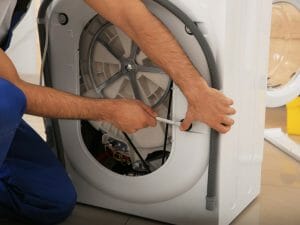Washer and Dryer Noise Problems
Are the clanks and whirrs of your washer and dryer driving you up the wall? Don’t fret, dear reader, for we have the solution to your noise problems.
In this article, we will guide you through the troubleshooting process, helping you identify and fix those pesky squeaky, thumping, and grinding noises.
So, grab your toolbox and get ready to conquer these auditory annoyances like a true master of appliance mastery.
Let’s silence those machines once and for all!
Key Takeaways
Before You Start, Unplug Your Dryer
Before you start, make sure to unplug your dryer. This is an important safety precaution when working with any major appliances, including dryers.
To access the inner components of your dryer, you will need to remove the access panel, which is usually located on the rear panel. Once the access panel is removed, you will have a clear view of the various parts of your dryer, including the dryer belt.
Checking the dryer belt is crucial when troubleshooting noise problems. Over time, the dryer belt can become worn or loose, resulting in loud noises during operation. By inspecting the belt for any signs of damage or looseness, you can identify if it needs to be replaced or adjusted.
Remember to always unplug the dryer before attempting any repairs or maintenance.
What to Do if Your Dryer Is Making Squeaky Noises

If your dryer’s making squeaky noises, you should check the belt for wear and tear. A noisy dryer can be quite frustrating, but fear not, there are a few things you can do to fix the issue. Here’s what you need to know:
To resolve the problem, you may need to replace the sleeve bushing, drum slides, or motor pulley. Consult your dryer’s manual or seek professional assistance for detailed instructions on how to replace these components.
Check the Drum Rollers and Axles
One way to address the issue with squeaky noises coming from your dryer is by inspecting the drum rollers and axles for any signs of wear or damage. The drum rollers are responsible for supporting the dryer drum as it rotates. Over time, these rollers can become worn or damaged, resulting in squeaking sounds during operation.
To check the drum rollers, first, unplug the dryer and remove the front or rear panel. Locate the drum rollers and axles, which are typically found at the back of the drum. Inspect them closely for any signs of wear, such as flat spots, cracks, or excessive play. If you notice any damage, it is recommended to replace the drum rollers and axles with new ones.
Additionally, you may also want to check the drum glides and drum seal for any signs of wear or damage, as these components can also contribute to squeaky noises.
Check the Idler Pulley
To address the issue with the squeaky noise, you should check the idler pulley for any signs of wear or damage. The idler pulley is a crucial component in your washer or dryer that helps to maintain tension on the drive belt. If the idler pulley is faulty or worn out, it can cause the belt to slip or become loose, resulting in noise during operation.
Here are some things to consider when examining the idler pulley:
What to Do if Your Dryer Is Making Thumping Noises
When diagnosing thumping noises in your dryer, start by checking the drum support rollers for any signs of wear or damage. Thumping noises can be caused by worn-out or damaged drum support rollers, which are responsible for supporting the dryer drum as it rotates.
If the drum support rollers are worn or damaged, they may cause the drum to move unevenly, resulting in a loud thumping noise. Additionally, if you hear a grinding sound along with the thumping noise, it could indicate that the drum support rollers need to be replaced.
While it is possible to replace the drum support rollers yourself, it is recommended to seek the assistance of a dryer repair professional, especially if you are not familiar with the technical aspects of dryer repair.
Check the Drive Belt
Check if your drive belt is loose or damaged, as this can cause the drum to make unusual noises. The drive belt is a crucial component of your washer or dryer, responsible for transferring power from the motor shaft to the drum. When the drive belt is loose or worn out, it can create a variety of noise issues. Here are some signs of wear to look out for:
If you notice any of these signs, it’s important to replace the drive belt promptly to prevent further damage and restore optimal performance to your appliance.
Check the Drum Seal

Now that you’ve checked the drive belt and ensured it’s functioning properly, let’s move on to the next possible cause of noise in your washer or dryer: the drum seal.
The drum seal is responsible for creating a seal between the drum and the front or rear panel of the machine. Over time, this seal can become worn-out or damaged, resulting in scraping or unusual noises during operation.
To check the drum seal, start by unplugging the appliance and removing the front or rear panel, depending on the model. Inspect the seal for any signs of wear or damage. If you notice any issues, such as tears or gaps, it’s likely that the seal needs to be replaced.
What to Do if Your Dryer Is Making Grinding Noises
If you’re hearing grinding noises coming from your dryer, it’s likely that the drum seal needs to be inspected for wear or damage. This can be a concerning issue, as unusual dryer noises can be quite disturbing. However, you can take certain steps to address this problem.
Here’s what you can do:
Check the Drum Glides, Slides, or Pad

Make sure to inspect the drum glides, slides, or pad for any signs of wear or damage. These components play a crucial role in the smooth operation of your dryer and can be a common source of dryer noise problems.
Loose baffles, a worn drum glide, or a damaged drum pad can all contribute to unpleasant noises coming from your dryer.
To inspect the drum glides, slides, or pad, start by unplugging the dryer and opening the door. Look for any visible signs of wear or damage, such as fraying or cracking.
If you notice any issues, it’s important to replace the damaged parts promptly to prevent further damage and to restore optimal dryer performance.
Check the Drum Bearing
Inspect the drum bearing for any signs of wear or damage, such as squeaking or grinding sounds when the dryer is in operation. The drum bearing is a crucial component of the washer drum, responsible for smooth rotation. If it becomes worn or damaged, it can cause irritating noise problems.
To address this issue, follow these steps:
Frequently Asked Questions
How Can I Troubleshoot a Washer Noise Problem?
To troubleshoot a washer noise problem, start by examining the various components such as the motor, belts, and bearings. Listen for any unusual sounds or vibrations. Check for loose or worn parts. Consult the manufacturer’s manual for specific troubleshooting steps.
Why Is My Dryer Making a Buzzing Sound?
Your dryer may be making a buzzing sound due to a faulty motor or a loose component. It is important to troubleshoot and repair the issue to avoid further damage.
What Should I Do if My Dryer Is Making a Rattling Noise?
If your dryer is making a rattling noise, it may be due to loose parts or a worn-out belt. Check for any loose screws or bolts and tighten them. If the noise persists, consider replacing the belt.
Why Is My Washer Making a High-Pitched Squealing Noise?
If your washer is making a high-pitched squealing noise, it could be due to a worn-out belt or a faulty motor. You should consider contacting a professional technician for a thorough inspection and repair.
How Can I Fix a Dryer That Is Making a Scraping Noise?
To fix a dryer that is making a scraping noise, start by checking for any loose objects inside the drum. Next, inspect the drum support rollers and the glides for wear and tear. Replace any damaged parts accordingly.
Conclusion
In conclusion, by following the steps outlined in this article, you can effectively troubleshoot and address various noise problems that may arise with your washer and dryer.
However, some may argue that these steps require technical expertise. Rest assured, with a little knowledge and the right tools, you can easily overcome this objection and become the hero of your laundry room.
Imagine the satisfaction of a quiet and smoothly running washer and dryer, allowing you to enjoy peace and tranquility while your laundry gets done.







